Ducks are versatile aquatic birds found in most bodies of water, like ponds, rivers, and lakes. Most domesticated duck breeds are kept for meat or eggs.
Ducks come in different colors and sizes. You’ll find small ducks, common in households, and large ones that can be wild or domesticated.
Our detailed guide lists some of the largest duck breeds. We also list their weight, characteristics, and where you might find them.
Some of the largest duck breeds include:
Table of Contents
1. Muscovy
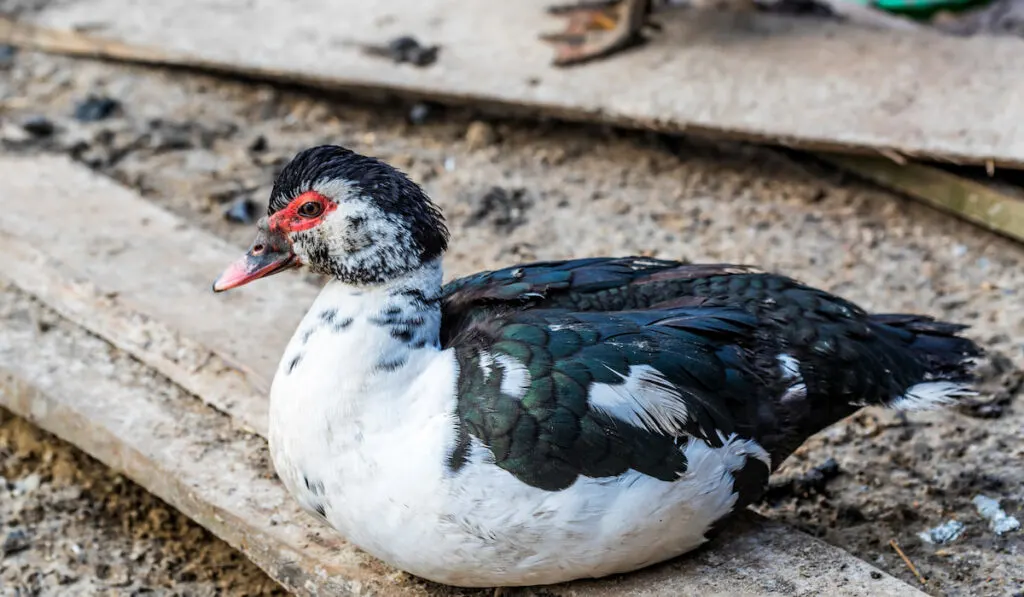
The Muscovy duck is one of the biggest domestic fowl species in the world. These ducks were native to South America before being transported to Europe and the United States.
Modern-day Muscovy ducks are raised for their meat. They are also kept as exhibition birds and backyard pets.
Muscovy ducks are three feet tall, about one foot taller than regular ducks.
This fowl species has long claws and a wide, flat tail. True wild Muscovy ducks are black with white wing markings.
Both genders have red or nude black faces. Domesticated males, or drakes, weigh ten to fifteen pounds. Females, or ducks, weigh six to eight pounds.
When it comes to demeanor, Muscovy ducks are gentle and calm birds. Ducks produce a quiet trilling coo, while drakes have a breathy call.
They are one of the quietest domesticated breeds and fly well over long distances.
Muscovy ducks take a year to fully mature, which makes them a slow-growing duck. Nonetheless, these ducks reach slaughtering age earlier than other breeds.
2. Rouen
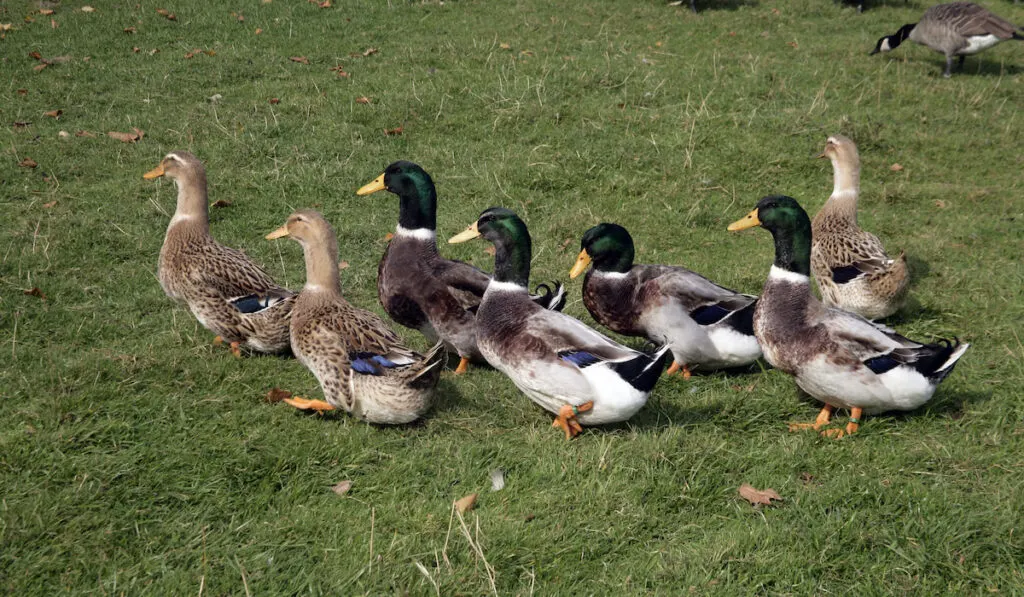
Rouen ducks are another large and heavy breed that dates back to the nineteenth century. The breed is originally from northern France.
Because of selective breeding, Rouen ducks are now double the size they were originally, and their body is now shaped like a boat.
Most Rouen ducks are now raised for their meat and eggs, while some may raise them for their beauty.
Rouen ducks can either be standard large ducks or production Rouens.
The standard Rouen duck weighs about ten pounds and has a stocky body and a level keel. It also has a medium-sized concave bill and a round head.
Production Rouens weigh seven to eight pounds and are slimmer.
Although Rouen ducks are majestic and large, they are quite calm. Duck-keepers love their easygoing and docile nature.
However, male Rouens can be aggressive when guarding their nest.
These ducks love to free-range on dry land but need lots of water throughout the day.
Due to their large size, Rouen ducks are not good fliers. You don’t have to worry about them flying away.
3. Aylesbury
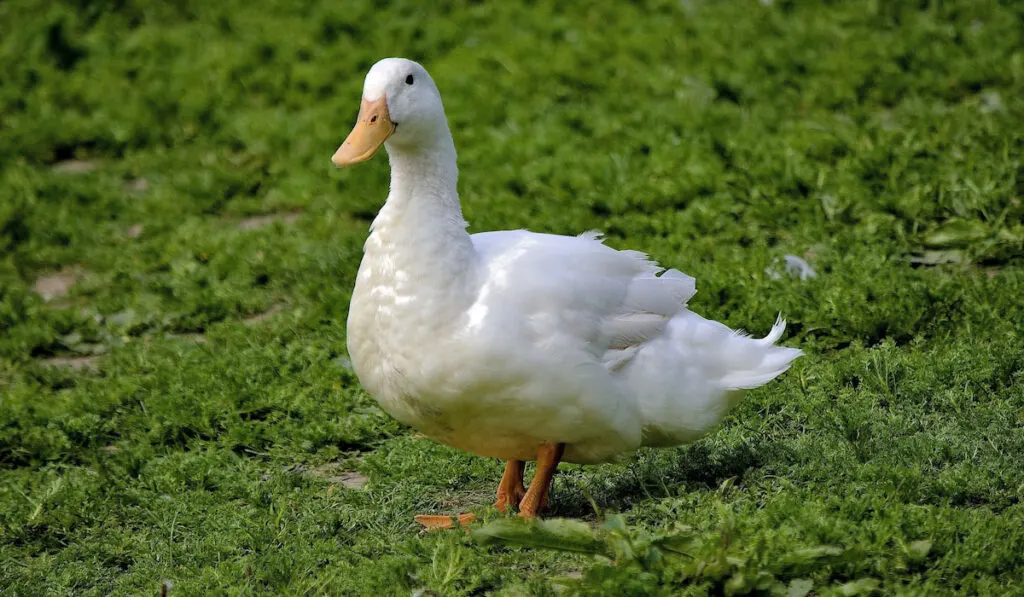
The Aylesbury duck breed was developed in the eighteenth century and is native to the United Kingdom.
This duck was bred specifically to be both large and completely white, which makes it great for meat and for exhibition.
Aylesbury ducks have pure white skin and white plumage. This large breed has a long body, a deep, straight keel, and pinkish-white bills.
The ducks weigh about ten pounds, while the drakes weigh a little more.
The utility variety of this duck is more common, as it is usually able to mate naturally. In contrast, the exhibition variety has a larger keel, and is therefore unable to mate easily.
These ducks are friendly, which makes them ideal to have around the farm if you have kids. However, they can also be messy and noisy.
Aylesbury ducks need plenty of space to move and forage.
4. Pekin
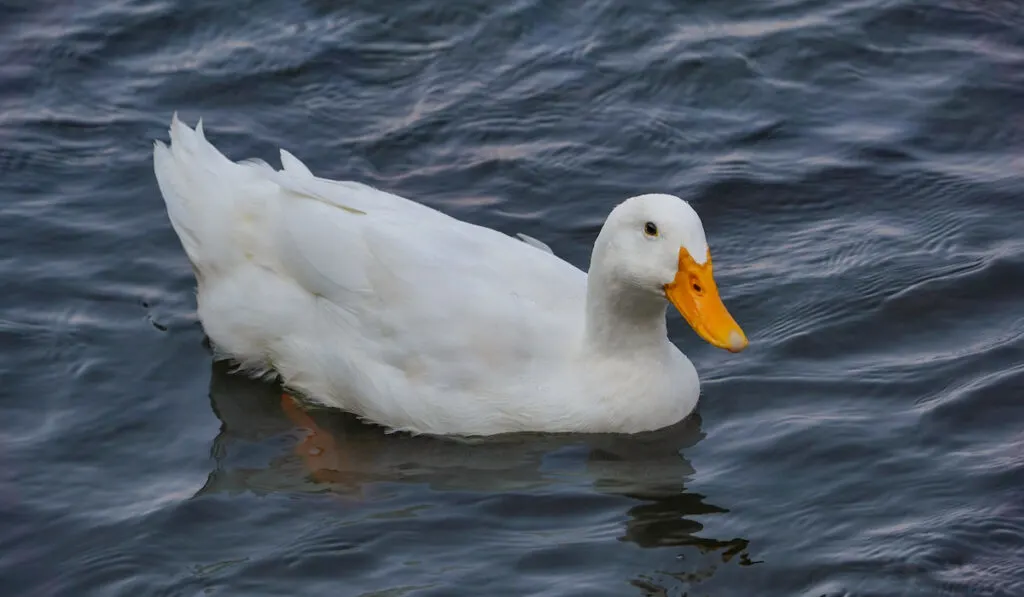
The Pekin is one of the oldest breeds, originally bred from the Mallard. These ducks are also called Long Island or American Pekin ducks.
This large duck breed originated from China and was introduced to the United States in the late 1800s.
The average lifespan of these ducks is about twelve years, and they usually weigh eleven pounds.
Pekin ducks have long necks and bodies. They also have yellow skin, creamy white feathers, orange-yellow legs, and a yellow bill.
Pekin ducks are intelligent, as they can warn others about impending danger. They also make excellent mothers and grow faster than most meat duck breeds.
Their friendly nature and good temperament make them good pets.
Being a dual-purpose breed, Pekins can lay close to two hundred eggs annually. They also produce quality meat.
Although Pekins are good egg-layers, they are not great brooders. Owners must incubate the eggs artificially to get chicks.
5. Silver Appleyard
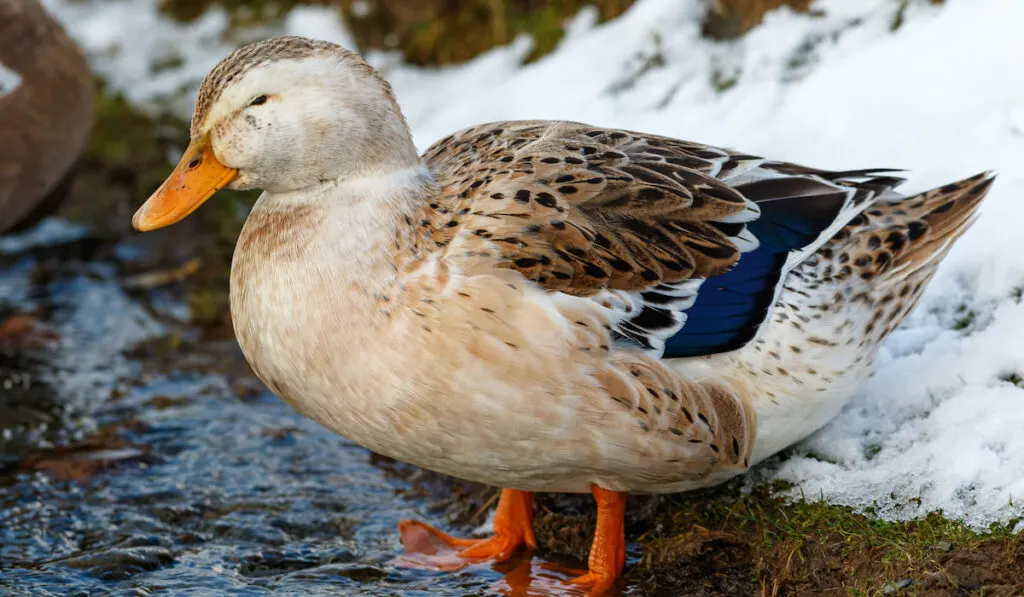
Silver Appleyard ducks get their name from their creator, Reginald Appleyard. This rare breed is a cross of Pekin, Rouen, and Aylesbury ducks.
Silver Appleyard ducks are classified as a heavy and large duck breed and are kept for both eggs and meat. Drakes weigh around nine pounds, while ducks weigh around eight pounds.
Being a dual-purpose breed, Silver Appleyard ducks lay close to two hundred and fifty eggs a year, and their meat is flavorful and lean. They are active foragers with a calm temperament.
Unlike most dual-purpose breeds that mature slowly, Silver Appleyards mature quickly and can reach over six pounds in only eight weeks.
6. Blue Swedish
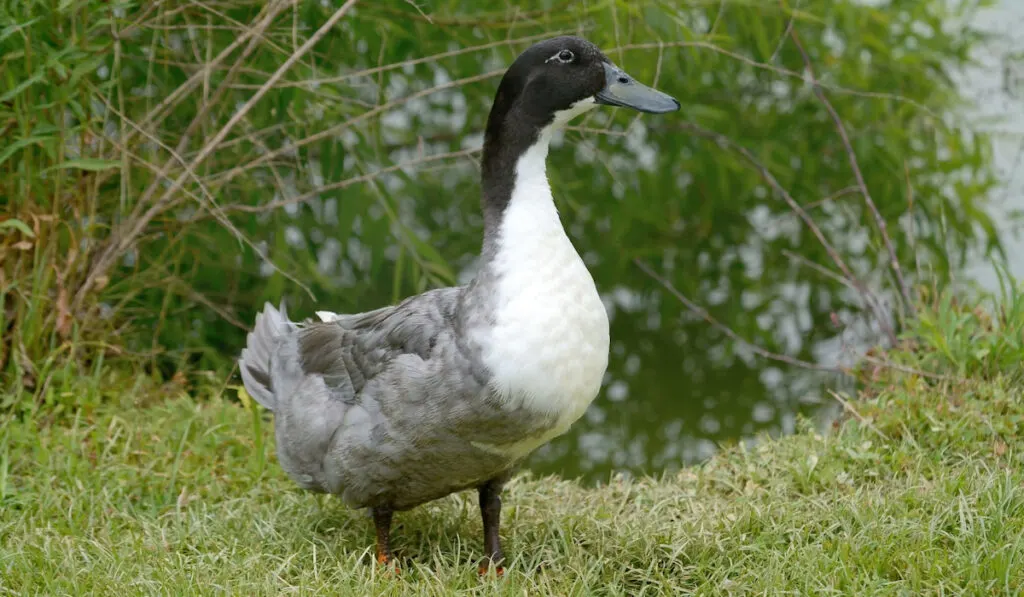
The Blue Swedish duck is another old duck breed. Developed in 1835, this breed originated in Sweden.
Blue Swedish ducks have dark blue heads and dark brown eyes.
Both genders have blue bodies, reddish-brown shanks, and feet with grayish-black spots. They also have white feathers on their necks and breasts.
Drakes have greenish-blue bills, while females predominantly have blue-colored bills.
These ducks mature slowly, which some believe contributes to its uniquely-flavored meat.
Blue Swedish ducks lay about one hundred and fifty eggs annually. They make excellent foragers and can be a good option for free-range duck farming.
Despite being friendly and warm, Blue Swedish ducks can be noisy. Ducks produce a loud, distracting yell, and drakes raise their quacks to compete.
These ducks have an average lifespan of eight to twelve years.
7. Cayuga
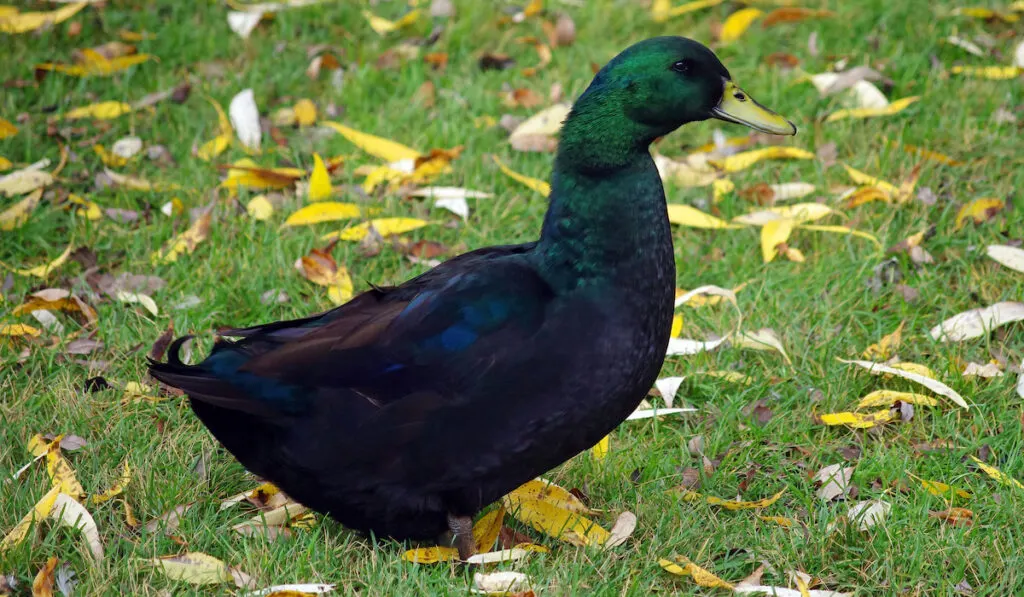
Developed in the nineteenth century, the Cayuga duck is named after Lake Cayuga in New York state.
Most farmers raise these birds for their meat and eggs, and they are known for their characteristic black feathers and green tint.
Cayuga ducks normally weigh around seven pounds.
Cayuga ducks are independent and resilient. They can survive in extremely cold temperatures, and they are able to get most of their food by themselves through foraging.
In addition to being hardy, Cayuga ducks are also friendly.
Final Thoughts
We have reviewed some of the largest duck breeds available, focusing on their appearance, characteristics, and temperament.
Consider raising some of these ducks yourself!
Resources
- https://www.vet.cornell.edu/animal-health-diagnostic-center/programs/duck-research-lab/domestic-ducks
- https://en.wikipedia.org/wiki/Muscovy_duck
- http://afs.okstate.edu/breeds/poultry/ducks/muscovy/index.html/
- http://afs.okstate.edu/breeds/poultry/ducks/rouen/index.html/
- http://afs.okstate.edu/breeds/poultry/ducks/pekin/index.html/
- https://beautyofbirds.com/pekinducks
- https://learnpoultry.com/blue-swedish-duck/
- https://www.roysfarm.com/silver-appleyard-duck/
- https://www.roysfarm.com/aylesbury-duck/
- https://www.roysfarm.com/cayuga-duck/
